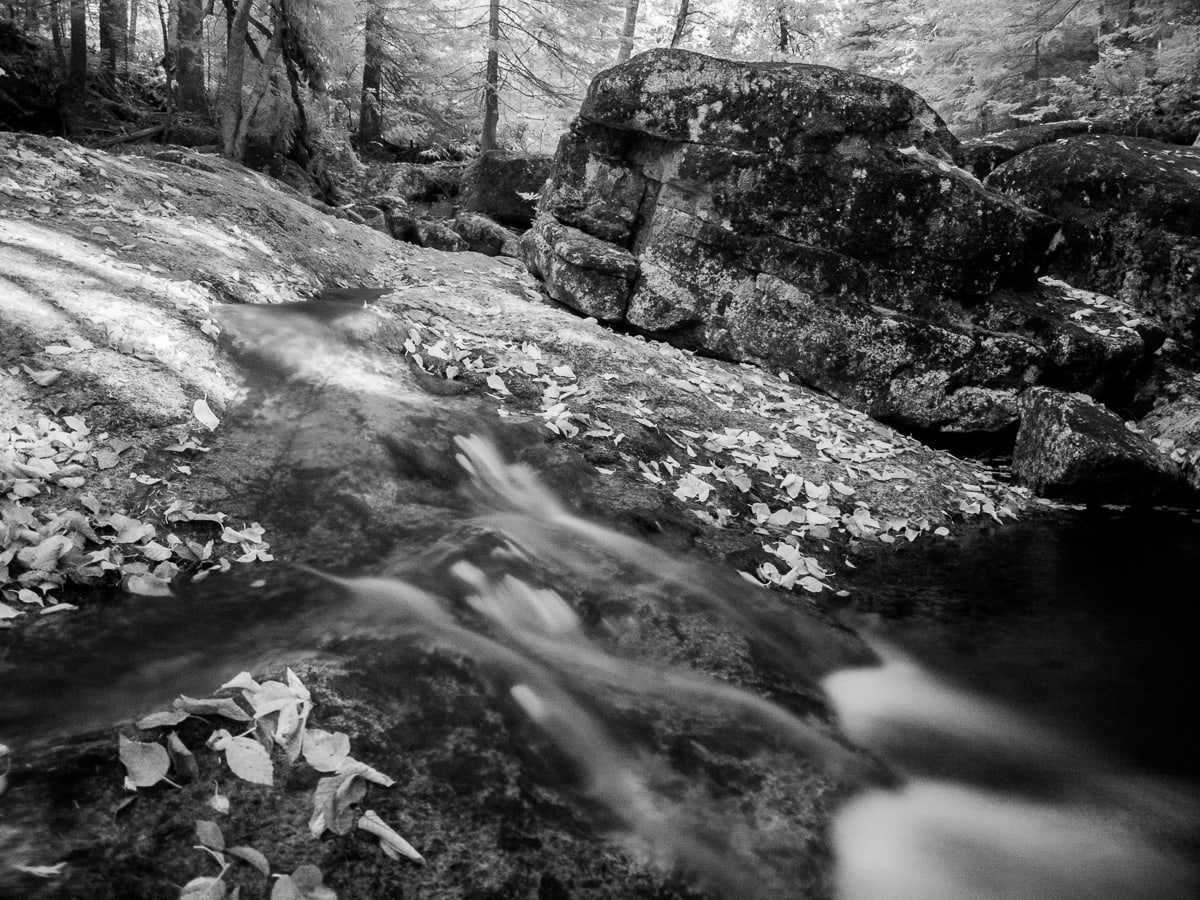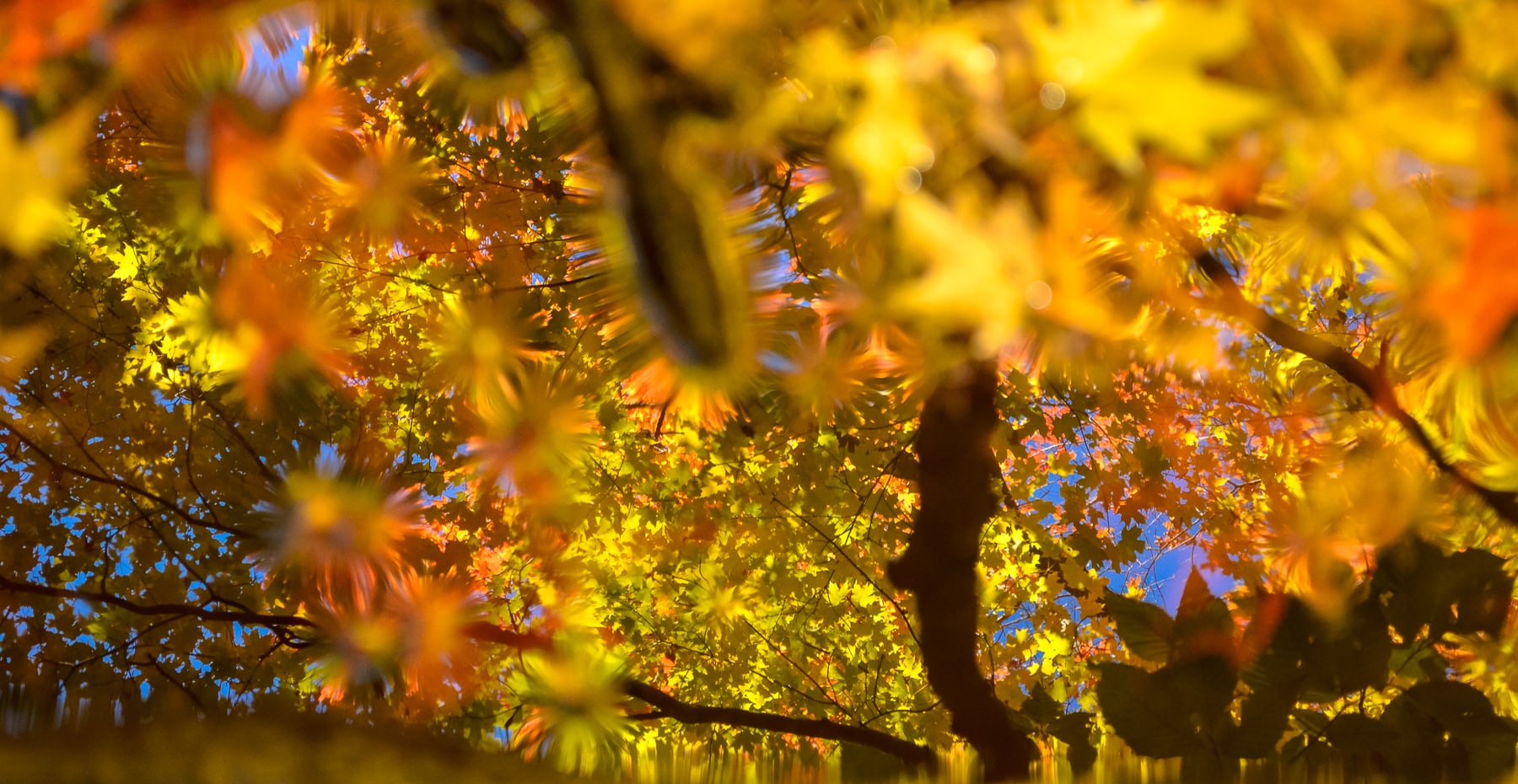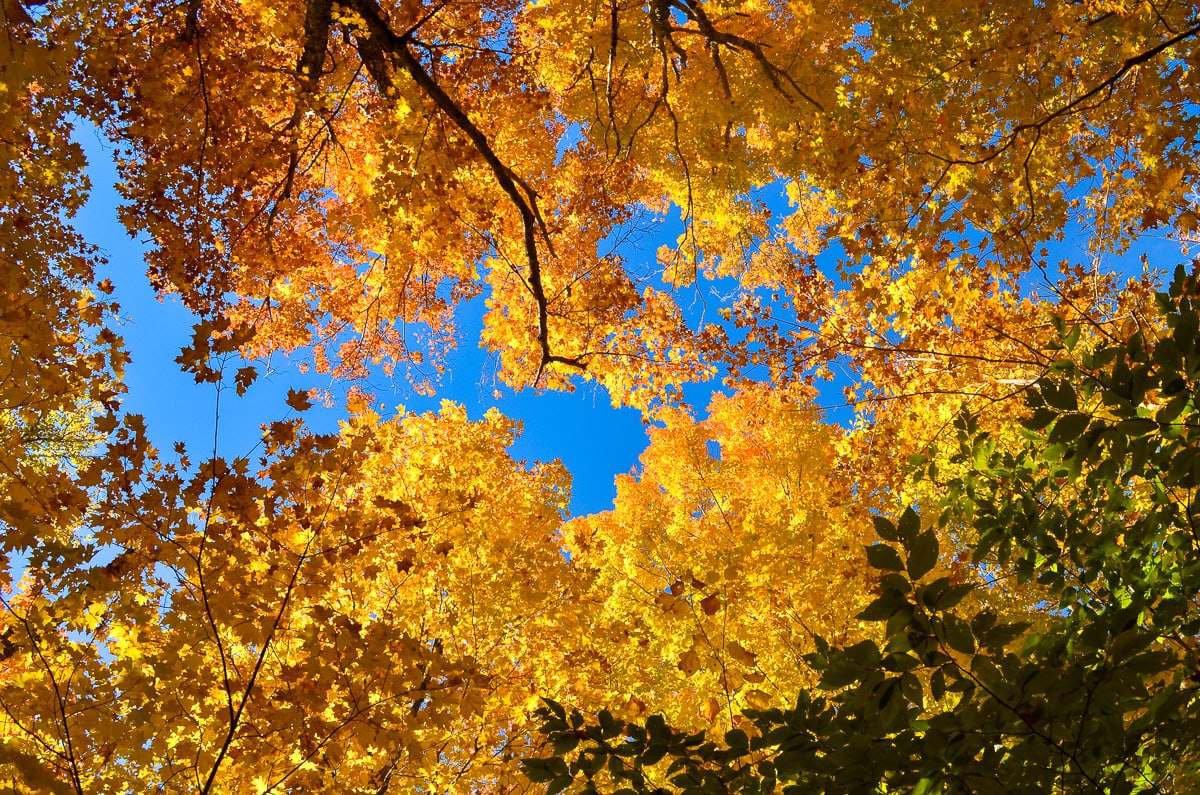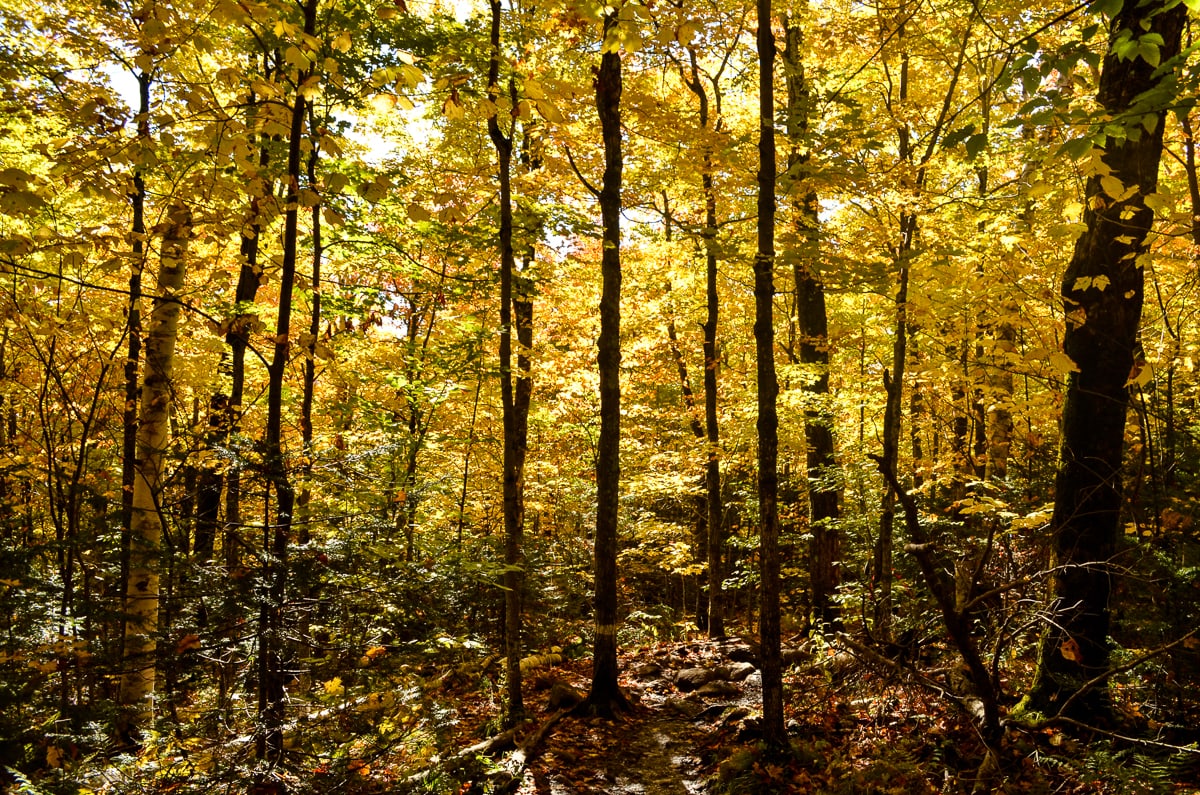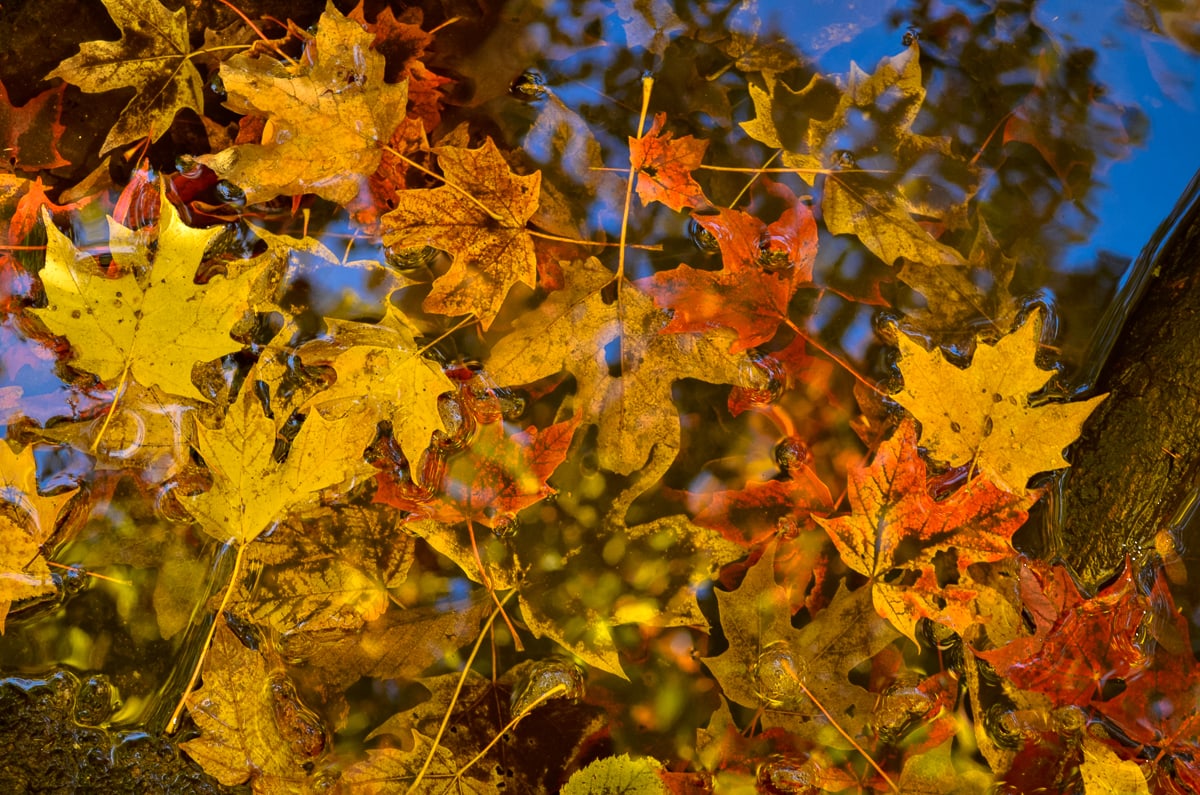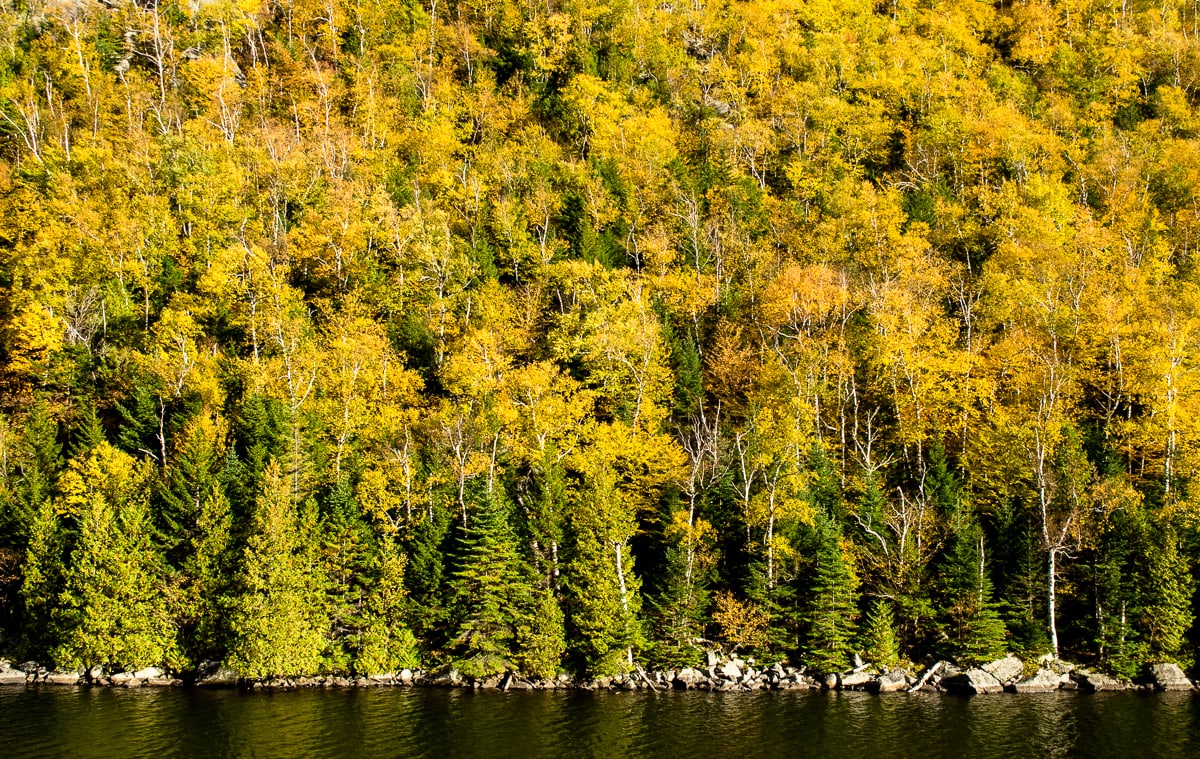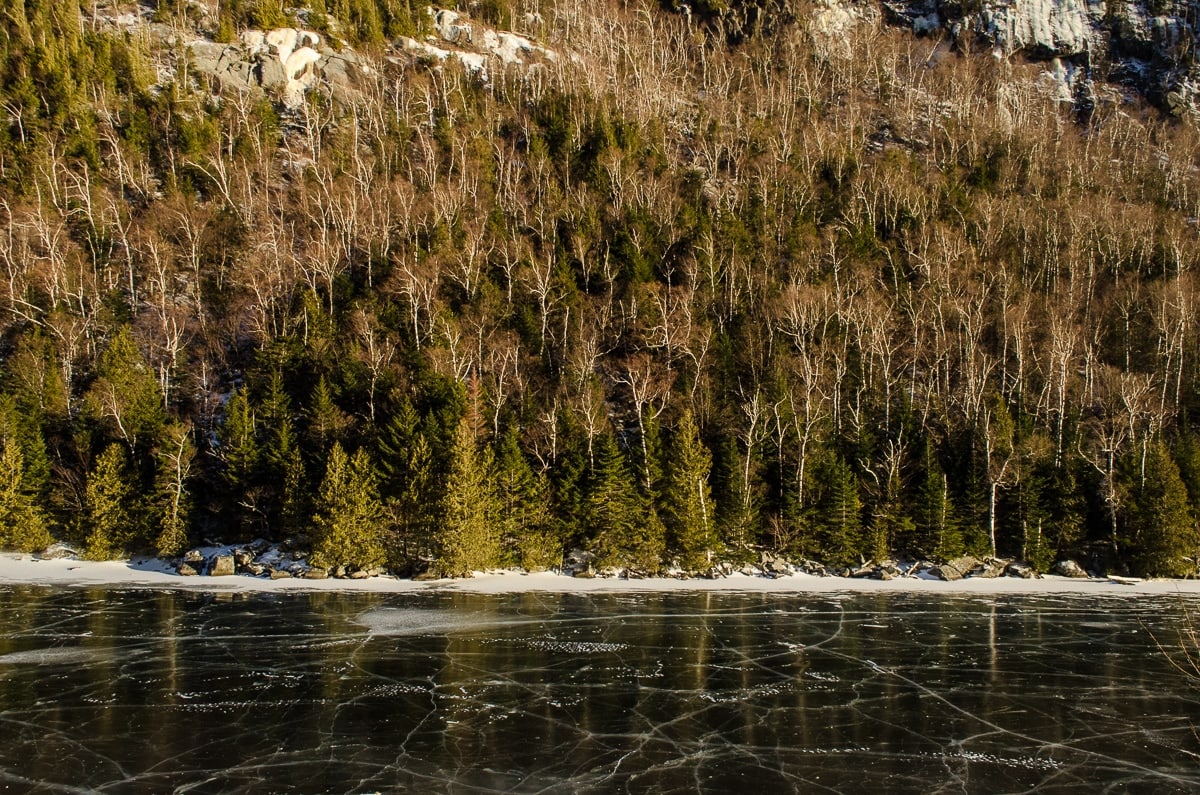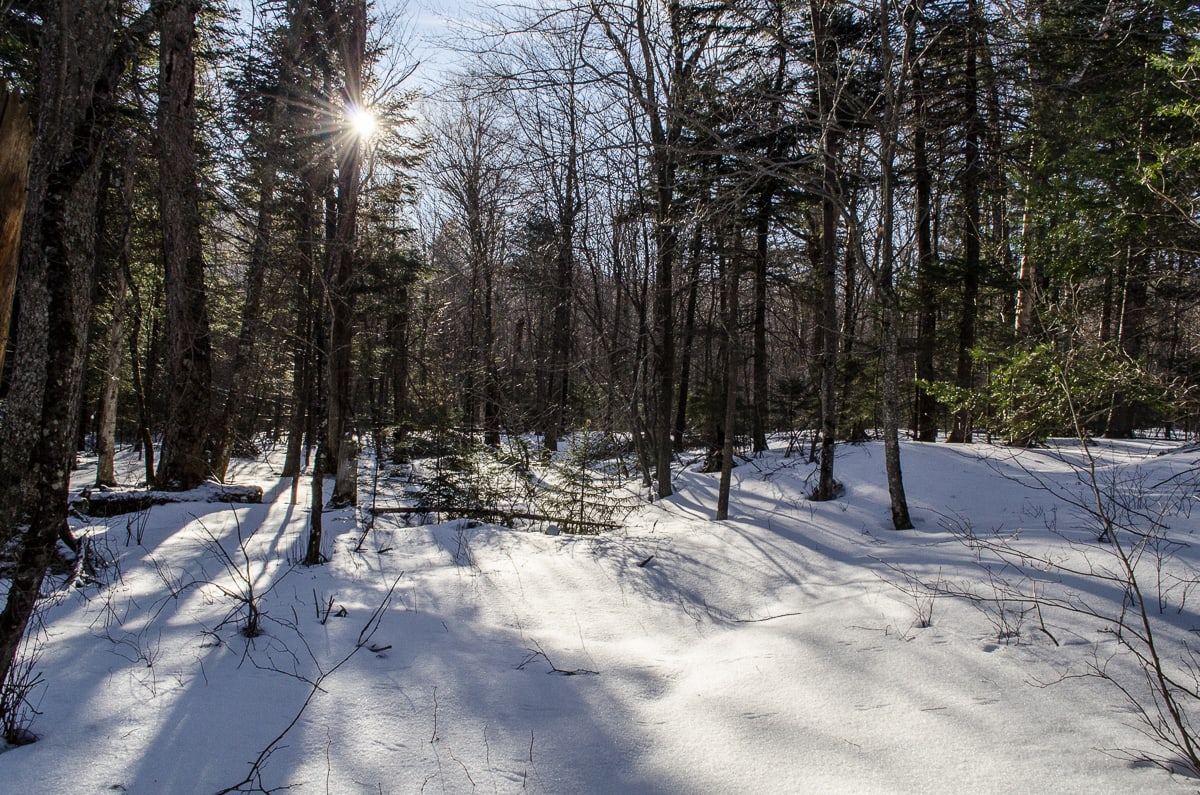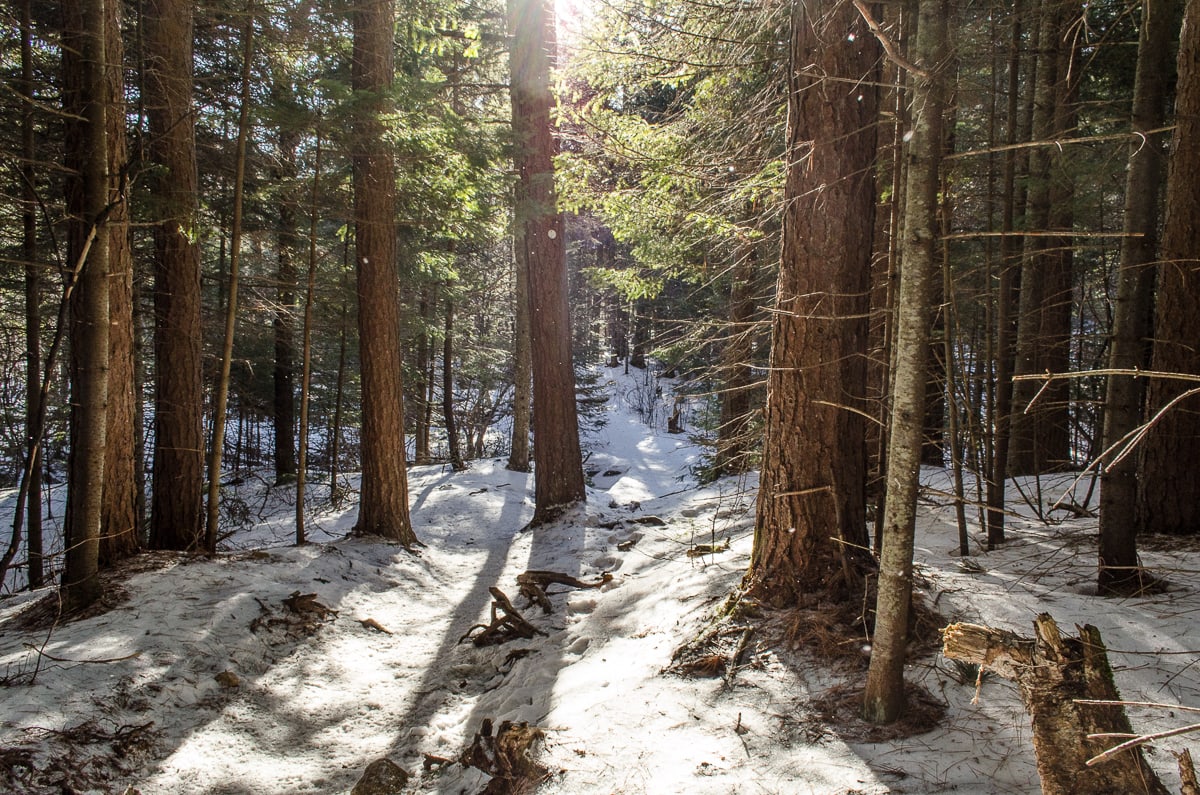Spherical panorama from the trail up to Big Slide Mountain. You can pan around and interact with this. Captured with an iPhone 5
The Adirondack Park is a 6 million acre nature reserve with 10,000 lakes and 30,000 miles of rivers and streams. It is oldest protected area in the US, and is protected by Article VII, Section 7, of the New York State Constitution.
The High Peaks
There are 46 High Peaks in the Adirondacks (defined as mountains over 4000 feet). The image below shows a stylized map of the High Peaks area, with Algonquin Peak (5115 ft), Mt. Marcy (5344 ft), Dix Mountain (4840 ft), and Giant Mountain (4626 ft).
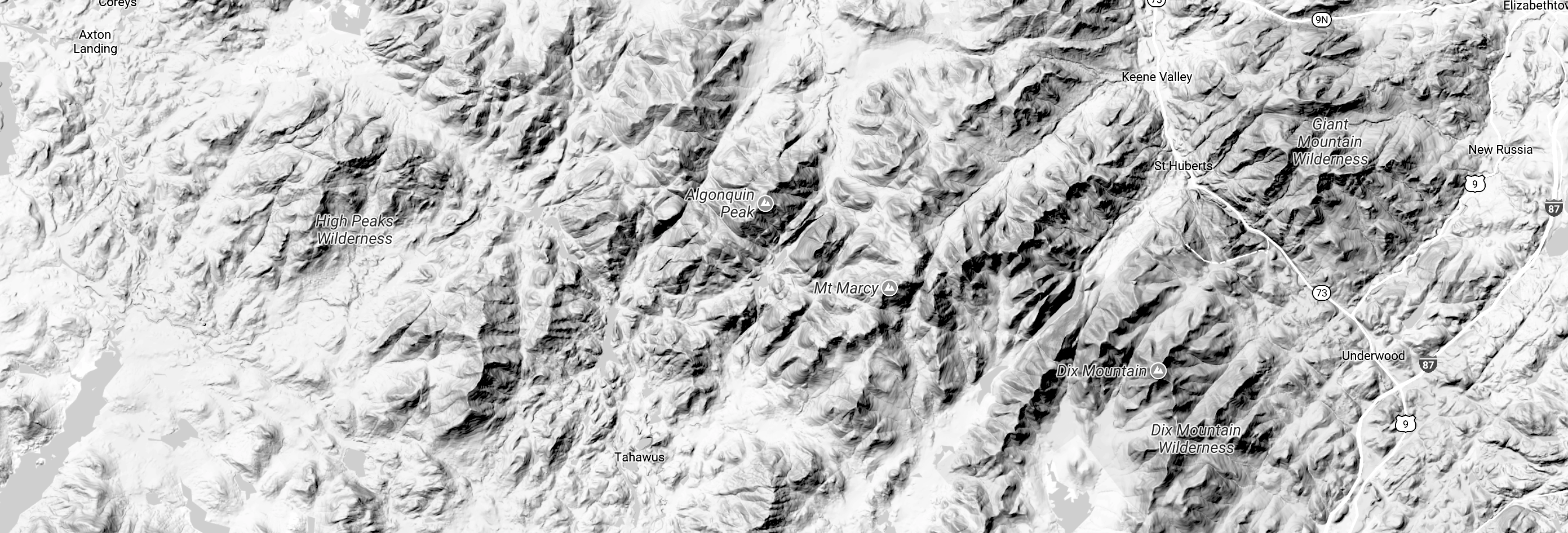
Stylized relief map of the High Peaks Area from Google Maps.
The view from many of the peaks are stunning. Here is the view from Cascade Mountain, looking at many of the other high peaks.
1/640 sec @f/13
Nikon D5100
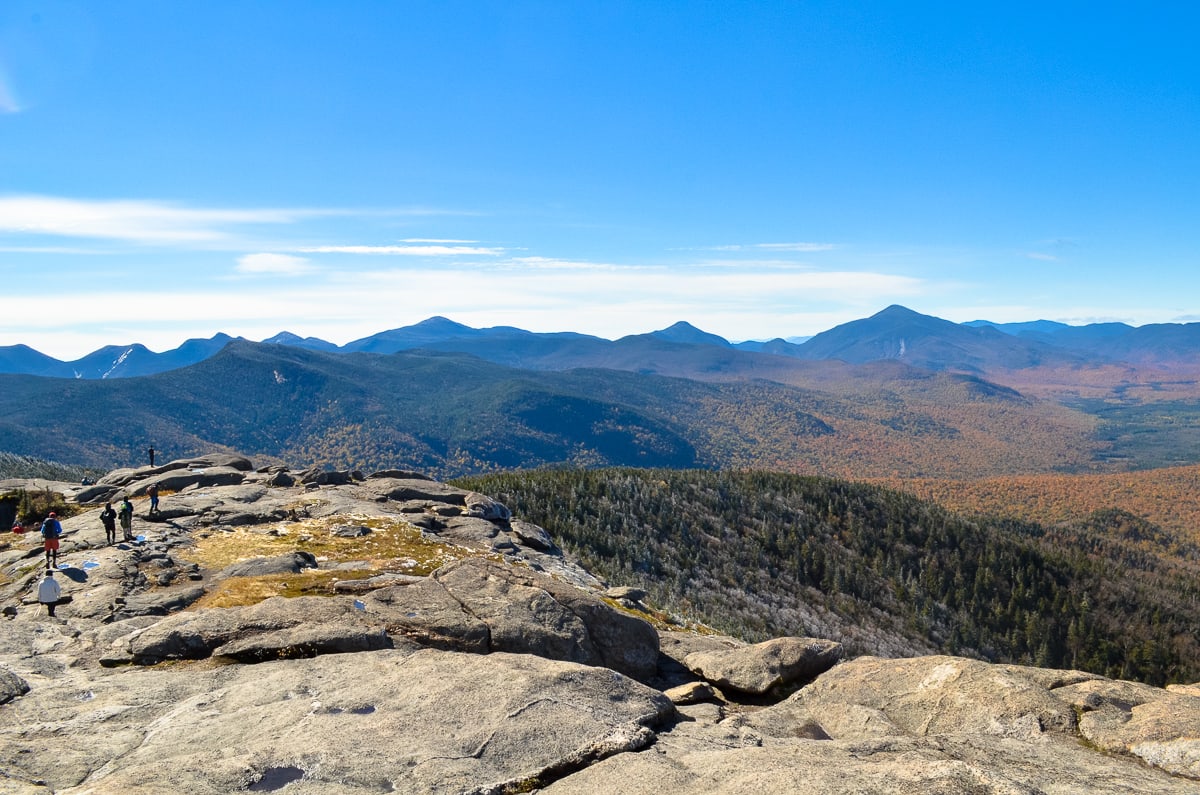
A view of Gothics, another High Peak, from Porter Mountain.
1/3200 sec @f/7.1
Nikon D5100
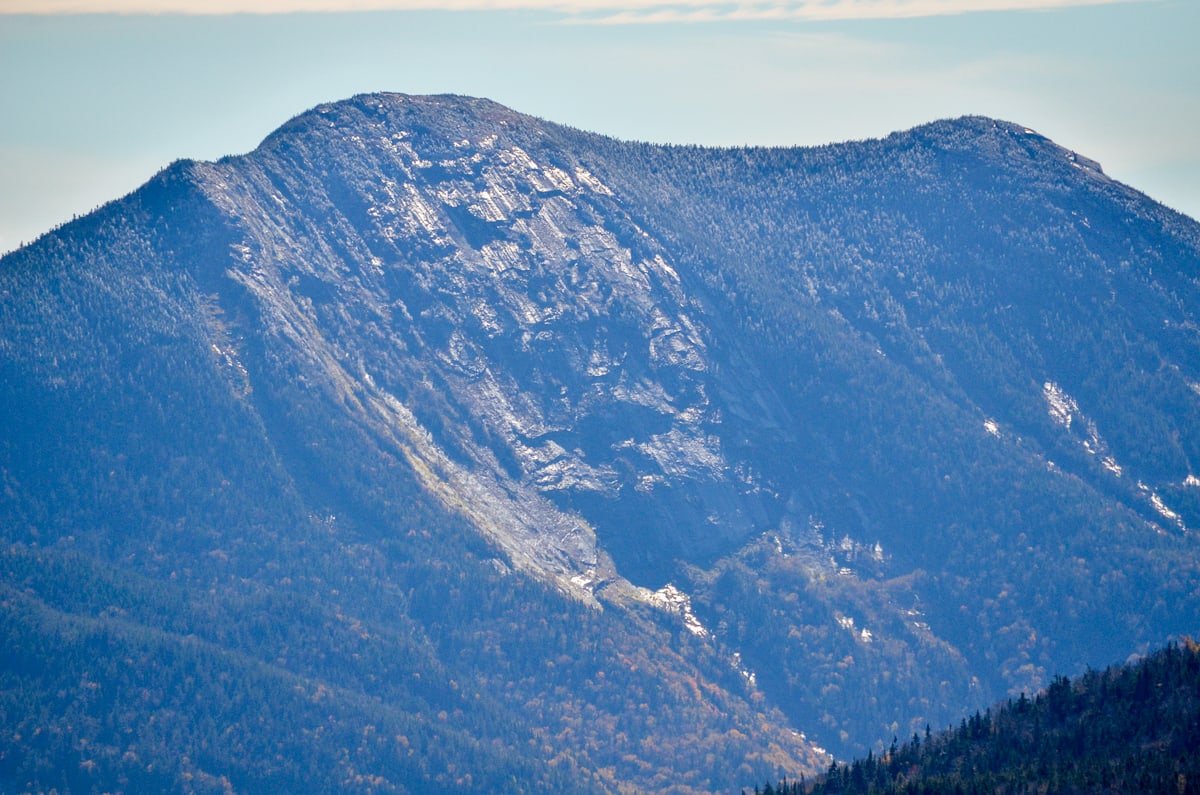
The weather can change dramatically as you go up a High Peak. Even past summer, ice from last winter clings to trees on the top of Cascade Mountain.
1/640 sec @f/13
Nikon D5100
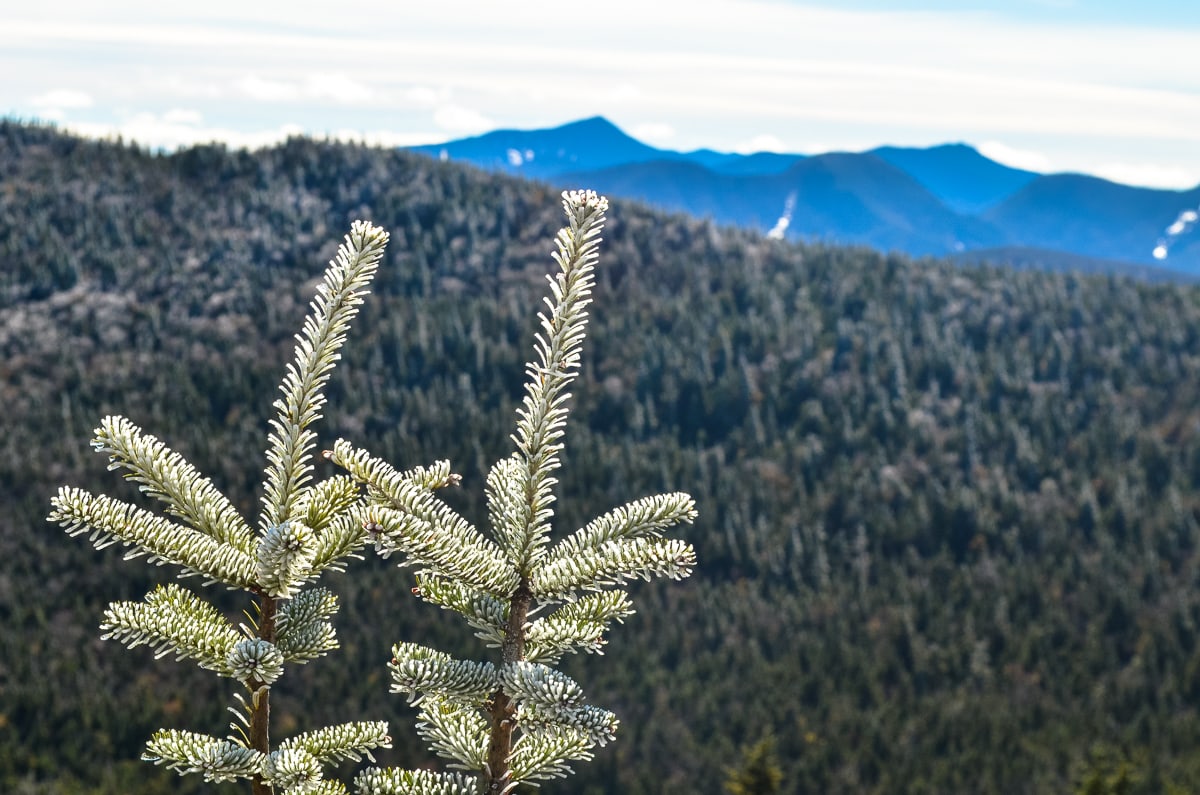
As Camus said, Autumn is a second spring where every leaf is a flower. The lower slopes of the mountain seem to have taken this to heart:
1/1600 sec @f/10
Nikon D5100
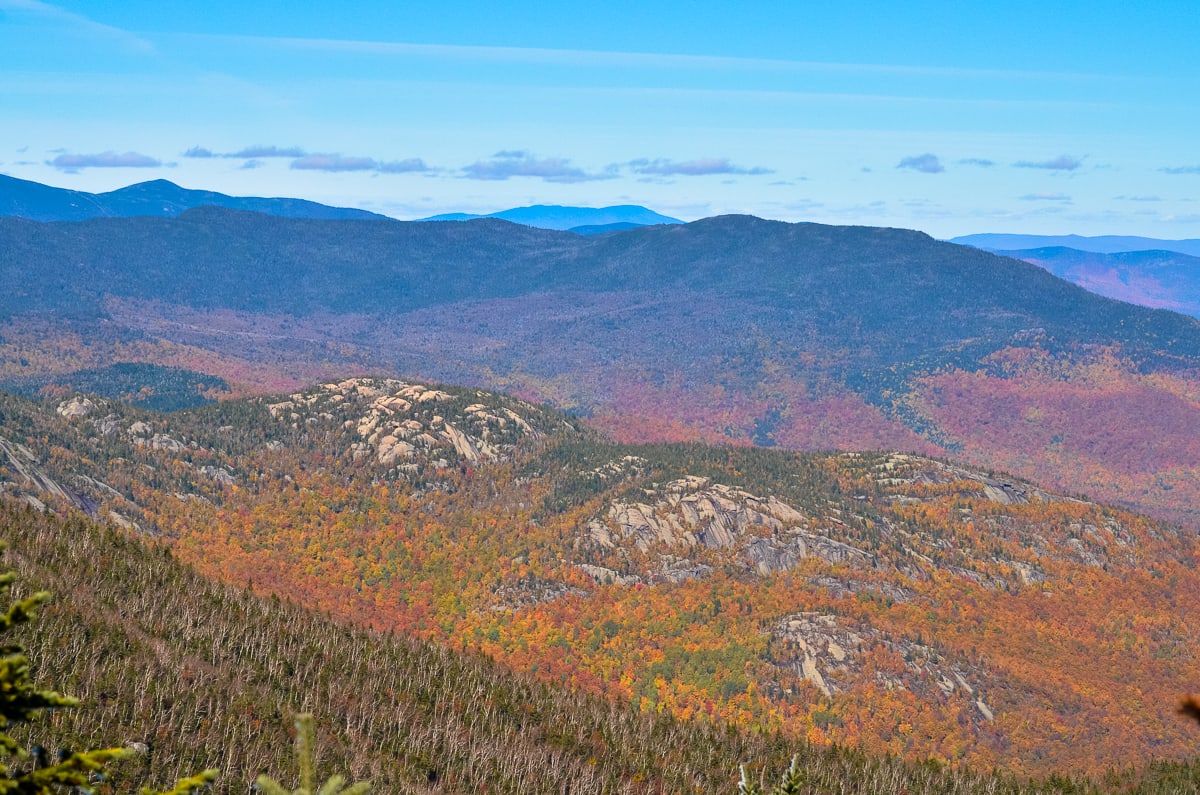
View of Lake Placid from Whiteface Mountain, which is the only High Peak that is accessible by car.
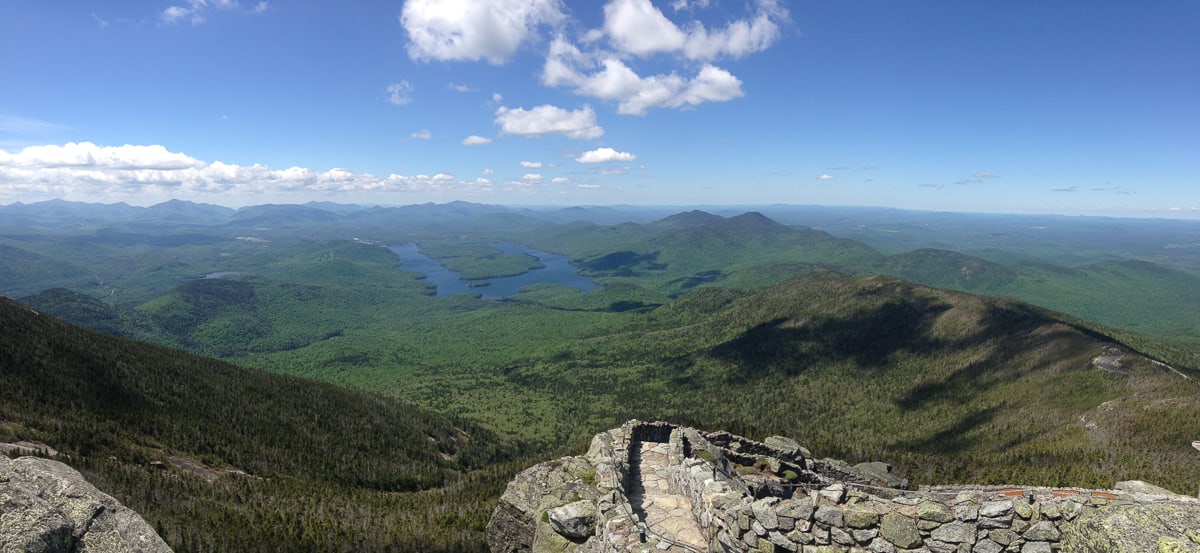
Panorama shot with iPhone 5
On the Trail
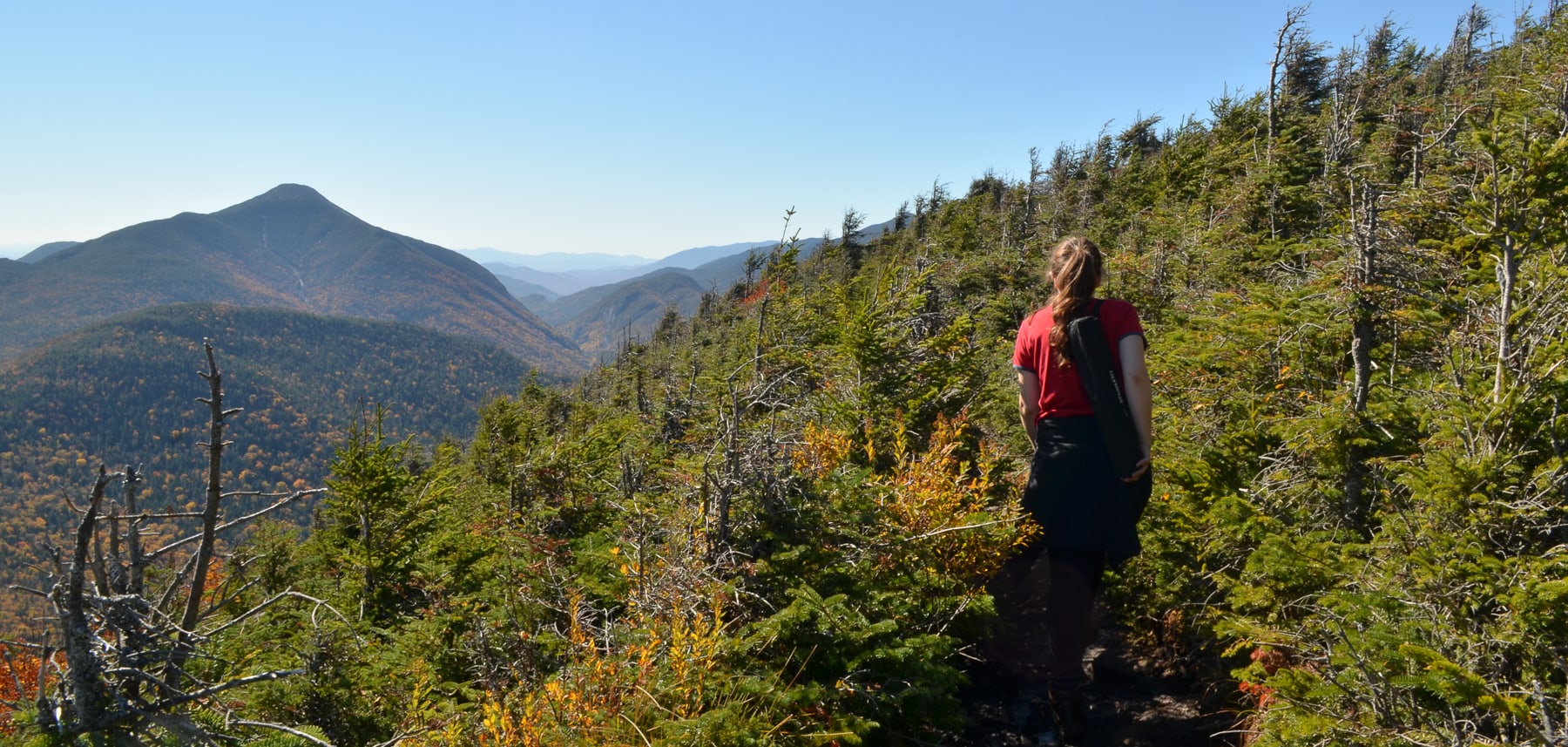
On the trail down Phelps Mountain. Note the windswept trees
1/60 s @ f/14 Nikon D5100
There is only one way up the top, and it is via fantastic trails that snake up the mountain, crossing a variety of ecological zones before ending in the Alpine wastes at the top. Early morning mist on the lower sections of the trail up Cascade and Porter Mountains is captures in the sunlight:
1/250 sec @f/8
Nikon D5100
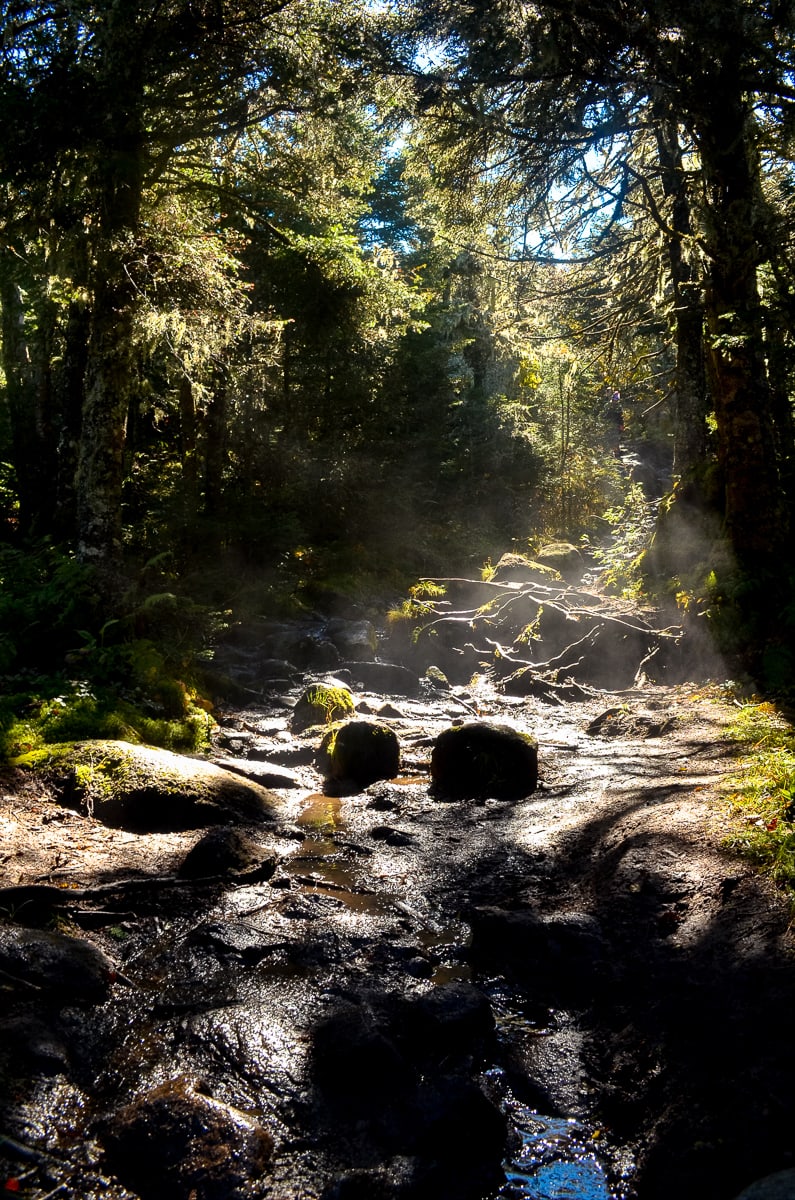
You can see the vegetation change slowly as you climb up the mountain, with deciduous trees giving way to firs and pine, and then finally to small stunted trees, and after you cross the tree line, nothing remaining but a few tenacious lichen.
1/400 sec @f/11
Nikon D5100
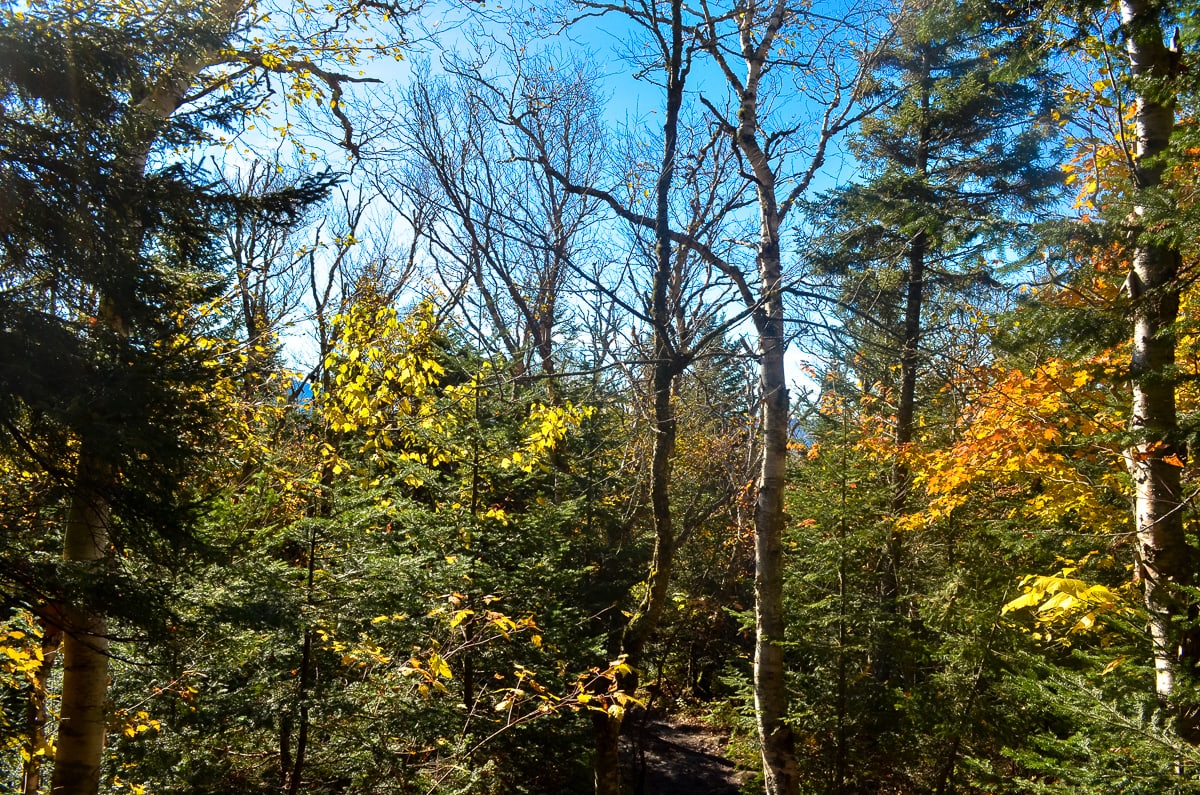
Infra-red image of the path up Rooster Comb Mountain. Under infra-red light, leaves turn bright while wood turns dark.
20 sec @f/3.5
Olympus E520
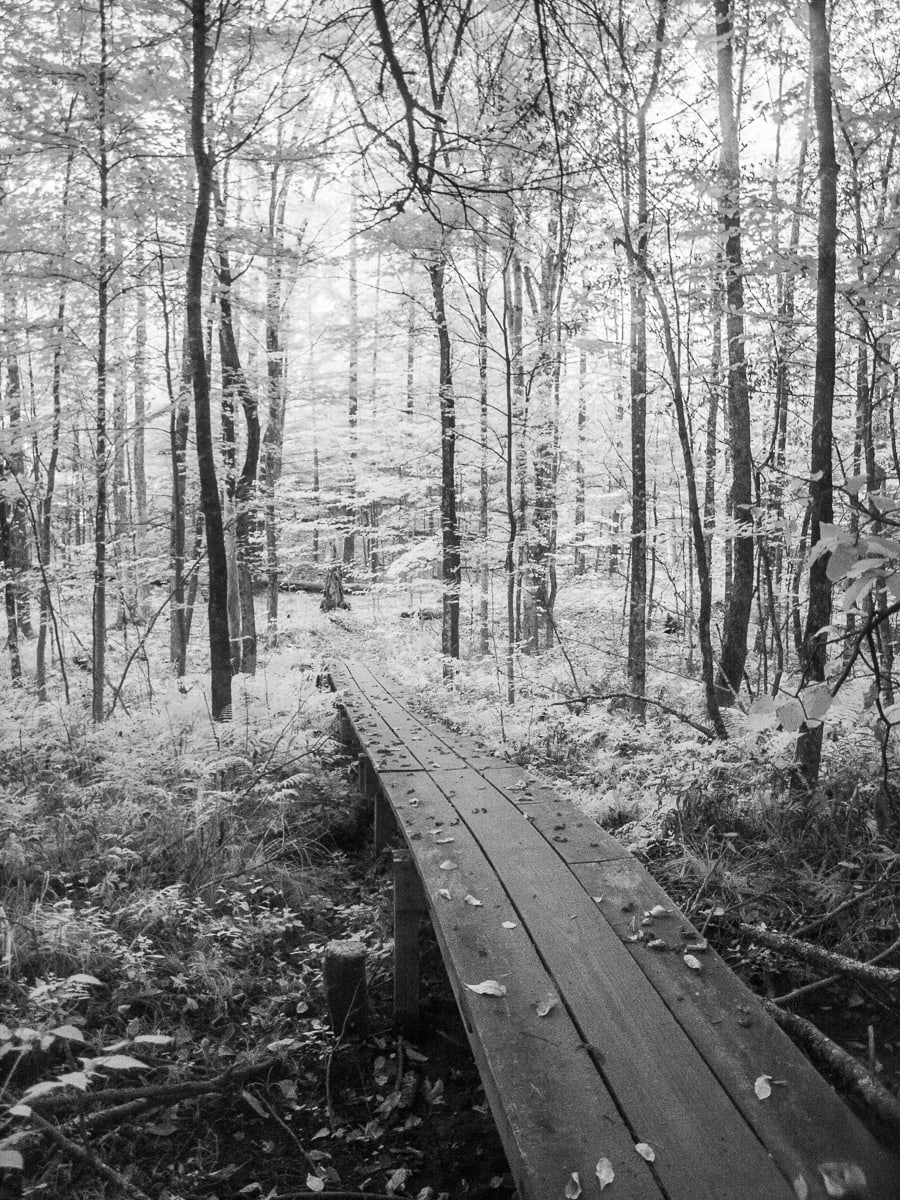
Not every mountain is accessible with a short day hike. Some of them require you to camp overnight in the wilderness. Our first trip the Adirondacks involved us losing our way, not knowing that there were bears, and wandering in the dark in circles while we tried to re-locate our tent after cooking. This picture was taken somewhere in the Dix Mountain Wilderness, in a dark forest inhabited by what we felt were several bears.
1/15 sec @f/2.4
iPhone 5
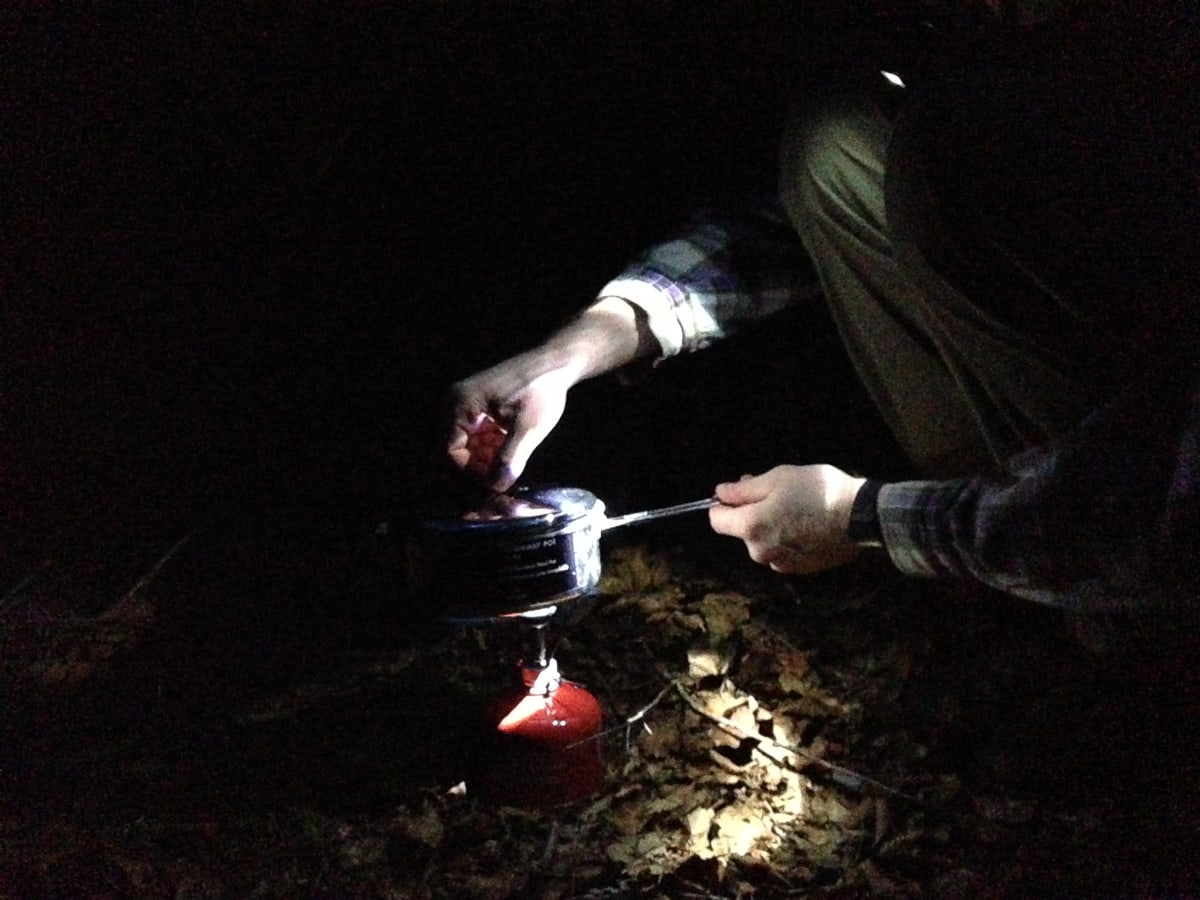
Some trails are stunning, especially in the Fall. This is the trail from the ADK Loj to Phelps Mountain.
1/20 sec @f/2.4
iPhone 5
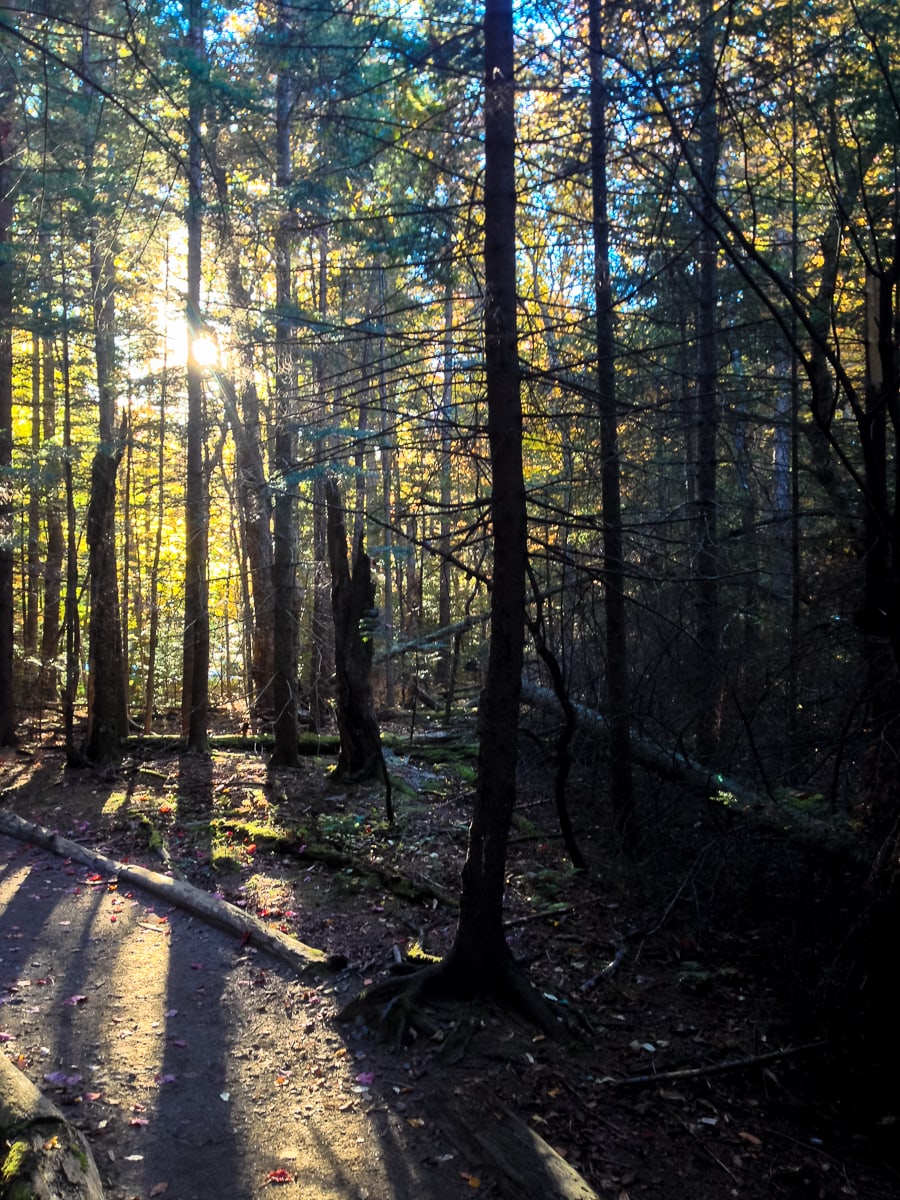
Infra-red photograph of a small stream on the trail up to Phelps Mountain.
1/160 sec @f/3.2
Olympus C750
